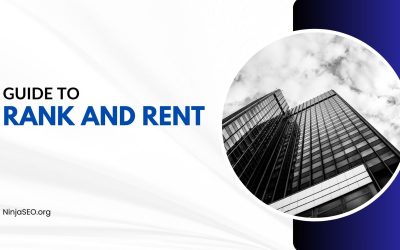So you’ve probably heard of SEO (Search Engine Optimization), but have you ever heard of Negative SEO? Negative SEO is a tactic used by unscrupulous individuals to harm a competitor’s website rankings in search engines.
It involves malicious tactics like building spammy backlinks, copying content, or even hacking the site.
In this article, we’ll take a closer look at what negative SEO is, how it can impact your website, and what you can do to protect yourself from such attacks.
What is Negative SEO?
Negative SEO refers to the malicious practice of using unethical techniques to manipulate search engine rankings and harm a competitor’s website. It involves tactics aimed at damaging a website’s reputation, decreasing its search engine rankings, and ultimately reducing its organic traffic. Negative SEO can have devastating effects on a business, leading to financial losses and tarnishing its online reputation.
Definition of Negative SEO
Negative SEO is the deliberate act of employing unethical tactics to harm a competitor’s website by manipulating search engine rankings, damaging its reputation, and ultimately reducing its organic traffic.

Types of Negative SEO
There are various types of negative SEO techniques that unscrupulous individuals or competitors may employ to harm a website. These techniques include link spamming, content scraping, negative reviews, hacking, and website defacement.
Link Spamming
Link spamming involves artificially creating a large number of low-quality or spammy backlinks to a target website. These backlinks are typically from low-quality or irrelevant websites, and they aim to make search engines view the target website as having poor link quality. This can result in the website being penalized and losing its search engine rankings.
Content Scraping
Content scraping involves copying and duplicating a website’s content and publishing it on various other websites without permission. This not only violates copyright laws but also confuses search engines, which may end up penalizing the original website for having duplicate content.
Negative Reviews
Negative reviews can be a powerful weapon in negative SEO. Competitors or malicious individuals may leave fake negative reviews on various review platforms or directly on a target website. These reviews can damage the credibility and reputation of the business, discouraging potential customers from engaging with it.
Hacking and Website Defacement
Hacking and website defacement involve gaining unauthorized access to a website and altering its content or appearance. Negative SEO attackers may deface a website by adding inappropriate content, spammy links, or even malicious code, leading to a loss of credibility and potentially damaging the website’s rankings.
Motivations behind Negative SEO
The motivations behind negative SEO can vary, but they generally stem from a desire to harm a competitor’s online presence and gain a competitive advantage. The most common motivations include:
- Eliminating Competition: Some businesses may resort to negative SEO techniques to remove their competitors from the search engine results or damage their reputation, thereby gaining a larger share of the market.
- Jealousy or Envy: In highly competitive industries or among rival companies, jealousy or envy can drive individuals or businesses to seek ways to undermine their competition through negative SEO.
- Revenge: Negative SEO can also be a tool for revenge or retaliation against a business or individual that has caused harm or perceived wrongdoing in the eyes of the attacker.
- Financial Gain: In some cases, attackers may engage in negative SEO to financially benefit themselves, such as by promoting their own products or services over those of their competitors.

Examples of Negative SEO Techniques
Negative SEO techniques can take various forms, each aiming to harm a website’s rankings, reputation, or traffic. Some notable examples include link spamming, content scraping, negative reviews, and hacking.
Link Spamming
Link spamming involves creating a massive number of low-quality or spammy backlinks to a target website. These backlinks often come from low-authority or irrelevant websites and can result in search engines penalizing the target website for having poor link quality. This can lead to a significant decrease in search engine rankings and organic traffic.
Content Scraping
Content scraping occurs when someone copies and duplicates a website’s content without permission and publishes it on other websites. This not only violates copyright laws but can also confuse search engines, potentially leading to a penalty for duplicate content. Moreover, if the scraped content outranks the original content in search results, it can greatly harm the targeted website’s visibility and traffic.
Negative Reviews
Negative reviews can be a powerful form of negative SEO. Competitors or malicious individuals may leave fake negative reviews on review platforms or directly on a target website. These reviews can damage the business’s reputation, deter potential customers, and result in a significant loss of trust and credibility.
Hacking and Website Defacement
Hacking and website defacement involve gaining unauthorized access to a website and modifying its content or appearance. Attackers may add spammy links, inappropriate content, or even malicious code to the website, causing it to lose credibility and potentially damaging its search rankings. This form of negative SEO aims to disrupt the user experience, erode trust, and harm the website’s online reputation.
Effects of Negative SEO
Negative SEO attacks can have severe consequences for targeted websites. The effects can include a significant decrease in search engine rankings, a loss of organic traffic, damage to the website’s online reputation, and ultimately financial losses.
Decrease in Search Engine Rankings
One of the most common effects of negative SEO is a decline in search engine rankings. Techniques such as link spamming and content scraping can trigger search engine penalties or algorithmic filters, causing a website to lose its position in search engine results pages (SERPs). As a result, the website’s visibility and organic traffic significantly decrease.
Loss of Organic Traffic
When a website’s search engine rankings are negatively impacted, its organic traffic naturally decreases. This decrease in organic traffic means fewer potential customers or visitors accessing the website, resulting in fewer conversions, reduced revenue, and overall business growth.
Damage to Online Reputation
Negative SEO attacks can harm a website’s online reputation, which can take a significant amount of time and effort to repair. Fake negative reviews, defaced content, or other forms of malicious manipulation can damage the trust and credibility of a business. This can deter potential customers from engaging with the website, resulting in reputational damage and ultimately impacting the bottom line.
Financial Losses
The combined effects of decreased search engine rankings, loss of organic traffic, and damage to the online reputation can have direct financial implications. Businesses may experience a decline in sales, fewer leads, and a negative impact on their overall revenue and profitability. Additionally, addressing the effects of negative SEO, such as removing spammy backlinks or recovering from a hack, can incur additional costs.

How to Identify Negative SEO
Detecting negative SEO attacks is crucial to protecting a website from potential harm. There are several key indicators and warning signs that can help identify if a website is being targeted by negative SEO techniques.
Sudden Drop in Rankings or Traffic
One of the most obvious signs of a negative SEO attack is a sudden and significant drop in search engine rankings or a severe decrease in organic traffic. Monitoring these metrics regularly can help identify any sudden and abnormal fluctuations that may indicate a potential attack.
Unnatural Backlink Profiles
Monitoring a website’s backlink profile is essential in identifying negative SEO attacks. Any sudden influx of low-quality or suspicious-looking backlinks, especially from irrelevant or unrelated websites, could be a red flag. Tools such as Google Search Console or third-party SEO tools can provide useful insights into a website’s backlink profile.
Irrelevant or Spammy Links
Another indicator of negative SEO is the presence of irrelevant or spammy links pointing to a website. These links may come from websites that have no relevance to the targeted website’s niche or industry. Regularly reviewing and analyzing the website’s link profile can unveil these types of unnatural links.
Content Duplication
Duplicate content can signal a negative SEO attack, as it can harm a website’s search engine rankings. Regularly checking if the website’s content has been duplicated elsewhere using tools like Copyscape or the Duplicate Content Checker in Google Search Console can help identify this issue.
Increased Negative Reviews
A sudden influx of negative reviews, especially if they are fake or appear orchestrated, can indicate a negative SEO attack. Monitoring reviews on various platforms, including social media and review websites, allows businesses to stay informed and recognize any patterns or abnormal behavior.
Prevention and Protection Against Negative SEO
Taking proactive measures to prevent and protect against negative SEO attacks is crucial. By implementing strategies to monitor and safeguard a website, businesses can significantly reduce the risk of falling victim to these malicious tactics.
Regular Monitoring of Website Performance
Regularly monitoring a website’s performance, including search engine rankings, organic traffic, and backlink profile, can help identify any abnormal fluctuations or signs of negative SEO attacks. Tools like Google Analytics, Google Search Console, and third-party SEO tools are valuable resources in this regard.
Link Audits and Removal of Toxic Links
Conducting regular link audits to identify and remove toxic or spammy backlinks is an effective preventative measure. Monitoring the website’s link profile and disavowing any low-quality or suspicious backlinks through Google’s Disavow Links Tool can help mitigate the risk of negative SEO attacks.
Securing Website from Hacking
Keeping the website secure is essential to protect it from hacking and potential negative SEO attacks. Implementing robust security measures, such as using secure passwords, regularly updating software and plugins, and employing a reliable website security solution, can help safeguard the website and prevent unauthorized access.
Setting up Google Search Console Alerts
Setting up alerts in Google Search Console can provide timely notifications if a website experiences any significant issues, such as a sudden drop in search engine rankings or a manual penalty. These alerts enable website owners to take immediate action and mitigate the impact of a negative SEO attack.
Building a Strong Online Reputation
Establishing a strong online reputation through the creation of quality content, engagement with the target audience, and positive interactions can help mitigate the effects of negative SEO. By building a loyal customer base and developing a robust online presence, businesses are better equipped to weather potential attacks.
Steps to Recover from Negative SEO Attacks
Despite precautions, negative SEO attacks can still occur. In such cases, taking immediate action to recover from the attack is crucial. The following steps outline the recovery process:
Document the Attack
Thoroughly documenting the negative SEO attack is essential. This includes gathering evidence, such as screenshots or logs, that demonstrate the attack and its impact on the website’s rankings, traffic, or reputation. Documenting the attack provides valuable evidence in potential legal proceedings and aids in the recovery process.
Analyze and Identify the Attack Method
Carefully analyzing and identifying the specific negative SEO techniques employed is crucial for effective recovery. Understanding the attack method allows website owners to address the specific issues and implement appropriate solutions. Seeking professional assistance from SEO specialists or digital forensics experts can aid in the identification process.
Contact Webmaster and Submit Disavow File
Contacting the webmaster of websites hosting spammy or toxic backlinks and requesting the removal of those links is a crucial step. In cases where contacting the webmaster is not possible or proves ineffective, submitting a disavow file to Google can help disassociate the website from those harmful backlinks. This allows search engines to disregard the negative impact of those links on search engine rankings.
Improve Website Security
After a negative SEO attack, improving website security is vital to prevent future attacks. Conducting a security audit, updating software and plugins, changing passwords, and implementing additional security measures, such as firewalls and malware scanning, can help strengthen the website’s defenses against future attacks.
Request Search Engine Reconsideration
If the website has been penalized or its rankings significantly affected, submitting a reconsideration request to search engines is necessary. In the request, website owners should explain the negative SEO attack, outline the actions taken to address the issue, and request the removal of any penalties or restoration of rankings. Providing well-documented evidence and a comprehensive recovery plan can increase the chances of a successful reconsideration.
Legal Considerations Related to Negative SEO
Negative SEO practices can sometimes cross legal boundaries and result in legal consequences. Understanding the legal considerations related to negative SEO is crucial for both victims and those engaging in online marketing strategies.
Instances where Negative SEO is Illegal
In certain jurisdictions, deliberately engaging in negative SEO practices with the intent to harm a competitor or business can be illegal. Violations can include actions like hacking websites, distributing malware, or engaging in fraudulent activities. It is essential to consult with legal professionals to understand the specific legal framework relevant to negative SEO in a given jurisdiction.
Defamation and Legal Remedies
Negative SEO attacks that involve the spread of false information, maliciously spreading harmful rumors, or leaving defamatory content can lead to legal action based on defamation laws. Defamation occurs when false statements harm the reputation of an individual or business. Legal remedies, such as cease-and-desist letters, lawsuits, or takedown requests, may be pursued to rectify the damage caused.
Taking Legal Action Against Competitors
In some cases, victims of negative SEO attacks may pursue legal action against their competitors, seeking compensation for damages incurred. Legal action can take various forms, including filing lawsuits for defamation, infringement of intellectual property rights, or violation of competition laws. The appropriateness and viability of taking legal action should be determined on a case-by-case basis, considering the specific circumstances and jurisdiction.
Reputation Management and SEO
Reputation management and SEO go hand in hand. A positive online reputation is crucial for a successful SEO strategy, and maintaining a strong online presence is vital for reputation management. By combining these two disciplines, businesses can establish a positive brand image and mitigate the impact of negative SEO attacks.
Importance of Positive Online Reputation
A positive online reputation is essential for businesses in today’s digital landscape. It influences consumer perception, trust, and purchasing decisions. A strong online reputation cultivates brand loyalty, attracts potential customers, and differentiates a business from its competitors. Positive reviews, testimonials, and endorsements play a vital role in developing and maintaining a positive online reputation.
Combining SEO and Reputation Management Strategies
Integrating SEO and reputation management strategies allows businesses to shape and control their online presence actively. By optimizing website content, targeting relevant keywords, and building high-quality backlinks, businesses can improve search engine rankings while simultaneously promoting a positive brand image. Monitoring online reviews, engaging with customers, and proactively addressing negative feedback are essential components of reputation management.
Handling Negative Reviews and Feedback
Dealing with negative reviews and feedback is a critical aspect of reputation management. Businesses should respond promptly and professionally to negative reviews, aiming to resolve the issue and demonstrate a commitment to customer satisfaction. Engaging in open dialogue, offering solutions, and addressing concerns can help mitigate the impact of negative feedback and showcase a business’s dedication to resolving issues.
Case Studies on Negative SEO
Examining real-world case studies can provide valuable insights into the potential impact and consequences of negative SEO attacks. These examples demonstrate the various techniques employed, the resulting damages, and the recovery efforts undertaken.
Real-world Examples of Negative SEO Attacks
Case Study 1: Package Delivery Company
A package delivery company experienced a sudden drop in search engine rankings and organic traffic. After investigation, it was found that a competitor had engaged in negative SEO practices, including link spamming and content scraping. The competitor had created numerous low-quality backlinks and duplicated the delivery company’s content on various websites, causing a decrease in rankings and organic traffic. The company implemented a link audit, disavowed toxic backlinks, and submitted a reconsideration request to search engines, resulting in a gradual recovery of rankings and traffic.
Case Study 2: Online Retailer
An online retailer faced a surge of negative reviews across multiple review websites, damaging its online reputation. Investigation revealed that a disgruntled former employee had orchestrated the negative reviews as an act of revenge. The retailer implemented reputation management strategies focused on engaging with customers, addressing concerns, and promoting positive feedback. Over time, the retailer managed to rebuild its online reputation, demonstrating a commitment to customer satisfaction and gaining back consumer trust.
Impacts and Lessons Learned
These case studies illustrate the potential impacts of negative SEO attacks, including decreased search engine rankings, loss of organic traffic, damage to online reputation, and financial losses. They highlight the importance of promptly addressing and recovering from negative SEO attacks through measures such as link audits, disavowal of toxic backlinks, reestablishing trust with customers, and taking legal action when necessary. Businesses can learn from these examples to better prepare for and respond to negative SEO attacks.
Conclusion
Understanding the threat of negative SEO is crucial in today’s competitive online landscape. Knowing the different types of negative SEO techniques, their motivations, and the potential effects helps businesses protect their websites from harm. By regularly monitoring website performance, employing preventive measures, and taking immediate action in the event of a negative SEO attack, businesses can safeguard their online presence and mitigate the potential damages. Combining reputation management strategies with SEO is essential for building a positive brand image and successfully navigating the challenges posed by negative SEO. Organizations must stay vigilant, adapt to evolving SEO techniques, and prioritize the protection and recovery of their online presence.









